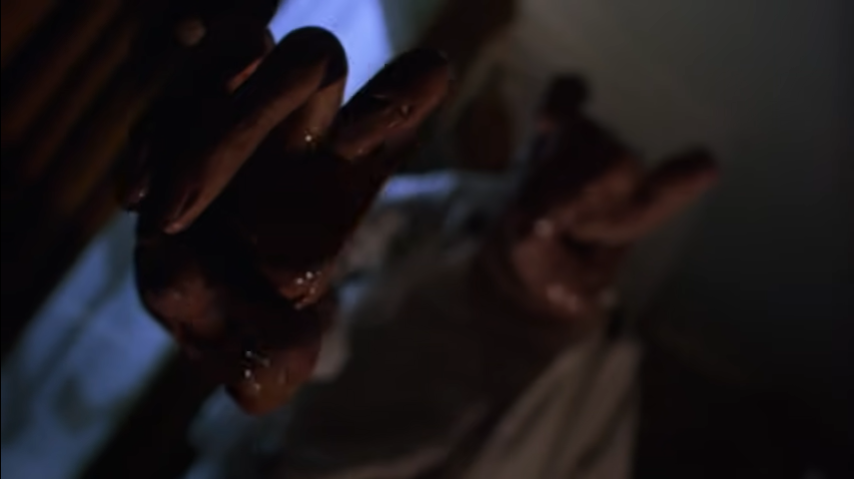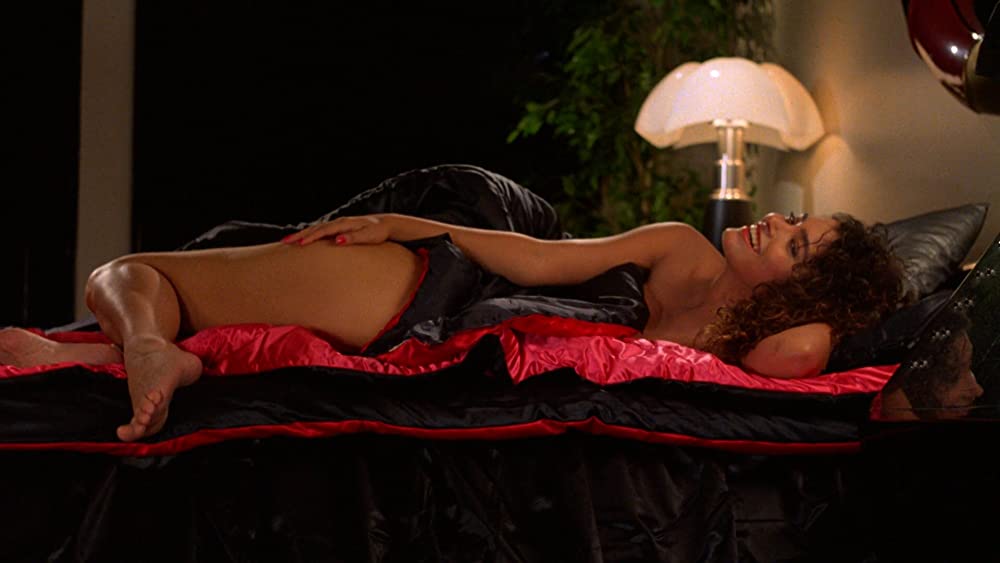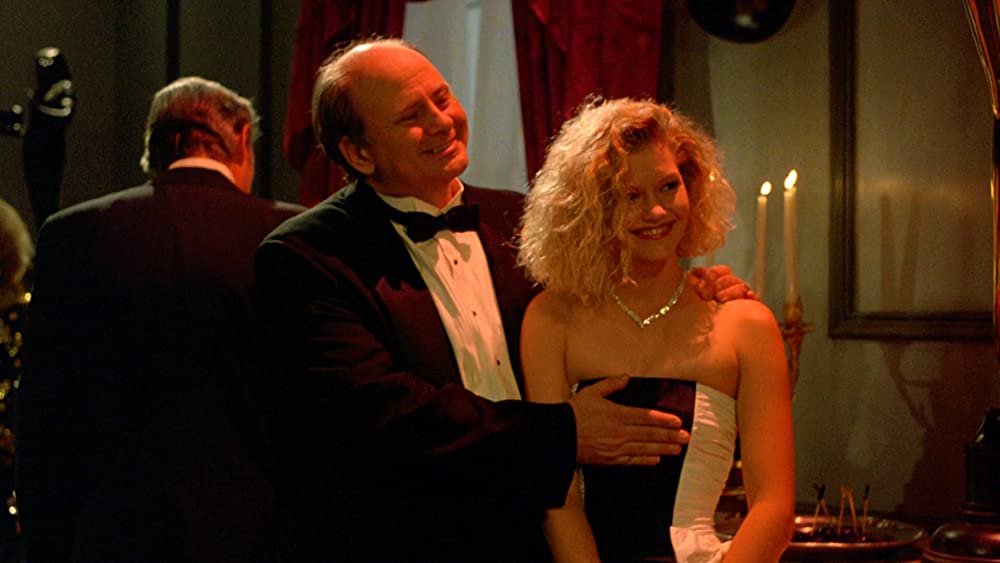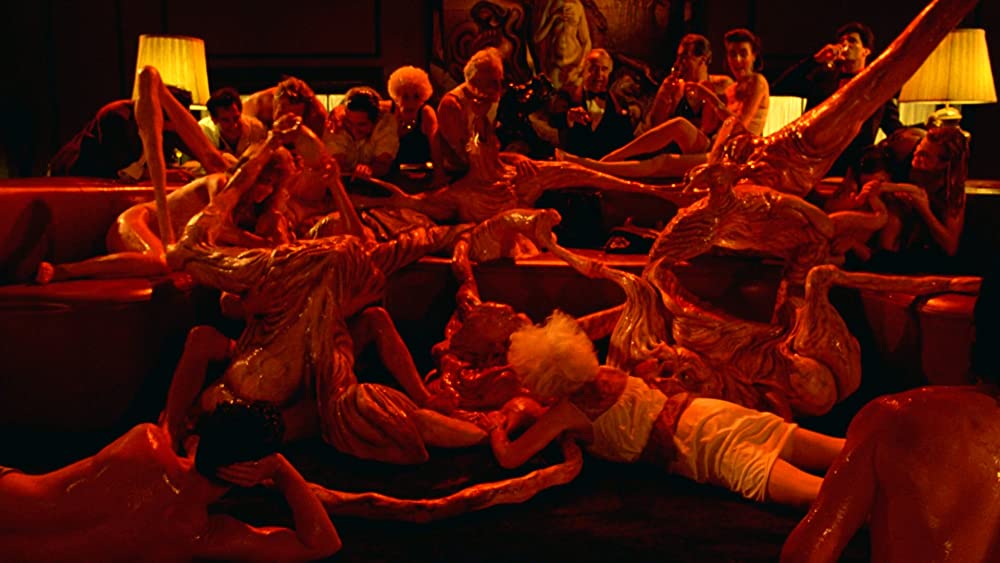
So ends a month spent with Arrow, and let’s cap it off with the type of movie that makes you appreciate the existence of these specialty services, because you know most mainstream streamers wouldn’t touch this with a ten-foot pole.
There’s a particular strain of eighties movies, genre movies especially, which are almost entirely about how the eighties were terrible, and specifically railed against the wealthy and the corporate culture that seemed to increasingly dominate everything during the Reagan era. Robocop is probably the highest profile example, but you also have John Carpenter’s The Live and Larry Cohen’s The Stuff all espousing the same kind of anti-authority stance—and in using genres and styles that were considered disreputable to mainstream consensus feels like an appropriate punkish way to do so. Horror with B-movie sensibilities, ultra-violent action, and an emphasis on gross special effects have a visceral anger to them, and thumbing your nose at the idea of good taste probably felt like the most subversive way to get your point across. Society is another example of this from the tail end of the decade, and it acquired a strong cult following among horror aficionados by taking things as far as they could go.
This is the first film directed by Brian Yuzna, who was mostly known for producing the movies of the late Stuart Gordon, including such favourites as Re-Animator and From Beyond (which he co-wrote.) Apparently after Gordon and him co-wrote the initial version of Honey, I Shrunk the Kids(!), Yuzna wanted more independence, and was able to secure financing for whatever he wanted as long as he also produced a sequel to Re-Animator. Taking that sweet deal for all it was worth, he picked up an intriguing script about a Beverly Hills teen becoming increasingly suspicious of his rich family’s secret life, but felt that the cult/slasher angle of its ending was not his speed, and so altered the twist into something else entirely—a monster movie, but more than that. What was produced was one of the most audacious and disgusting of all eighties horror movies, one that left an indelible impression on everyone who stumbled upon it during the heyday of practical horror effects.

Feeling like an outsider among the image and protocol-obsessed upper crust is a pretty straightforward premise, but the first offbeat thing Society does is make its lead an unexpected outsider. By all accounts, Bill (played by Baywatch star Billy Warlock) is the apex of eighties movie popular kid: a good-looking jock running for class president, so obsessed with basketball that his license plate reads “HOOPS”, who lives in a giant mansion in preternaturally sunny Southern California. Yet he feels completely alienated from his family—his parents, with their mannered voices and rictus grins, seem to disapprove of him having any interests outside going to high class parties and jockeying for power at school—and is seeing a therapist. Feeling detached from your parents isn’t something abnormal for a high school senior, but considering how weird his parents are, you wonder how he’s only started feeling that way. In any case, it’s a different sort of set-up from the usual take of this plot, but Yuzna and writers Woody Keith and Rick Fry do take it into consideration, as Bill’s seemingly privileged life is sometimes thrown in his face, even by his best friend.

The first two-thirds of the movie are soaked in paranoia, in some ways just as disturbing (and absurd) as what follows it—after Bill is given a tape recording made by his sister’s schlubby ex-boyfriend that seems to show his family and others engaging in incestuous sex acts behind closed doors, the strangeness around him coalesces into something increasingly sinister. All the evidence that Bill finds of something going on is dismissed by his therapist or seemingly altered while he wasn’t looking, and while that gets used as a pretext to question his sanity, he seems pretty anchored to this reality he is uncovering (while also clearly going insane.) After the ex-boyfriend seemingly dies in a car wreck (as he was trying to provide Bill with another copy of the tape), things go even further south, and the conspiracy among the Beverly Hills elite seems pretty certain…and that’s not even taking into account the really weird stuff Bill starts seeing, like people’s bodies seemingly contorting in impossible ways.

In terms of visuals, this comes closer to looking like a mainstream film (well, at least compared to other bizarre eighties monster movies I’ve watched), and really exploits the bright cheeriness of the California setting to offer contrast to what’s happening. But everything is also consistently heightened, in a way that often makes you forget you haven’t even gotten to the monster movie part yet. Every actor in this gives pretty cartoonish performances even before the twist, and our “normal” protagonist gradually gives in to a sweaty mania as the world seems to turn against him. While it riffs on high school movies of the era, including relationship issues when Bill falls for another girl (who talks like a space alien) and angers his current girlfriend, it feels almost gleefully off-model in how these people act. It’s a choice made not only to keep this firmly in the realm of horror-comedy, but also keeps things so feverish that the aforementioned twist feels like a natural extension even while still going beyond expectations.

In essence, this ends up having the exact same premise as the contemporaneous They Live: the elites are not human, and are secretly manipulating things and exploiting those in lower classes (“the rich have always sucked off the poor”, as one of them says.) Many descriptions I read identify them as aliens, but according to the actual dialogue, they seem to be another species of polymorphic entities that evolved alongside humanity…not that it really matters. Bill’s entire family, his therapist, the school bully posse, the girl he’s fallen in love with (who remains sympathetic towards him for reasons the other non-humans can’t understand, and to be honest, I can’t either), and a local judge, among others, are all part of this other species, and Bill was adopted into the family seemingly as part of some sick, long term game for them. With a crowd gathered at Bill’s family’s mansion, it becomes time for “the shunting”, and this is also the point where everything goes completely over-the-top.

What kind of creatures make up “society?” Apparently something from Yuzna’s nightmares, with some inspiration from Salvador Dali, further developed by him and SFX artist Screaming Mad George/Joji Tani, who had previously worked on Big Trouble in Little China (and also, to tangentially reference another tangent, directed the sequel to Tokyo: The Last Megalopolis, a movie I briefly mentioned in my last Creature post.) There’s a reason why the credits specifically call these “surrealist effects”: when the members of society engage in “the shunting”, it is a unrelentingly grotesque display of orgiastic melting and melding flesh, naked and half-naked skin stretching, twisting, and merging while everyone laughs and howls in sadistic delight. By the end, hands are popping through eye sockets, and people are being pulled inside-out. There are absolutely no compromises in the depravity portrayed in the last third of the movie, as everyone of every gender and age (and the cigar-chomping judge especially) takes part in this madness, with the still-alive schlubby ex-boyfriend acting as the main recipient of this feeding frenzy/orgy. It utilizes all the same techniques that defined this decade of creature features, but taken to every extreme possible.

Considering the disgusting nature of this concept and these hideously distorted body horror effects, the real surprising creative decision is to then use them as a vehicle for intentionally corny jokes—for example, earlier in the movie, Bill calls his dad a “butthead” (the most eighties insult in the world), and then later witnesses his dad’s head literally appear on his butt. This tone of gleeful stupidity and juvenalia, giving us some of the most disturbing visuals in a traditional horror movie but never actually taking them too seriously, is one of the things that probably alienated the critical consensus (who were never going to take to a movie like this anyway, although apparently it was well-reviewed in Europe), and even gorehounds who live for gross effects and nudity (which is not to say that Society doesn’t play to the base crowd periodically—it’s earlier “surreal effects” all involve naked girls.) At the same time, it’s also one of the things that makes it unique, and keeps it from feeling like bog-standard exploitation. They knew what they were doing and were clearly having a ton of fun doing it. The sheer audacity of combining monstrous imagery that extreme with provocative sex (not only sticking with the incest and orgy angle, but never shying away from, for example, having the lead bully aggressively suck on our protagonist’s mouth, or showing people ram their arms up other people’s rectums) is admirable, even if it makes you nauseous.

Despite that previous comparison to They Live, the social critique in this movie does feel a bit smaller in scope—focusing on the personalities of the ruling class, their decadent culture, and the troubling questions about what they do in their little inner circles. There are implications that the “society” has set themselves up in positions of power outside their own communities, but it’s really more of an off-hand remark used for jokes. It’s mostly broad, but does get into some specific points: their obsession with upward social climbing remains a big part of their malice, and the idea of “good breeding” is brought up repeatedly (like I said, none of them are even remotely subtle) just to make sure you really get it when they turn out to be depraved flesh-blobs. The rich often seem to treat themselves as entirely detached from the rest of civilization, and this just makes it literal.

It’s an absurd piece of agitprop, and one that really aims to disgust, but when the entire enterprise is to call the 1% inhuman parasites and give them the bird, why not really go for it? For as gross as many exploitation movies can be, the ones that find the most distressing ideas are the ones with a point, the ones with no reason to pull their punches—Robocop did that, and it was able to get some mainstream acceptance. Society, not so much, although that’s probably fine. This comes off as the product of more “realistic” outsiders from high society, the weirdo kids who love monsters and make-up effects and who probably do feel like they’re a different species from the ones ruling and ruining the world, and express their contempt in their own way. It’s not high art, and I doubt it would ever want to be, but it’s certainly one of the most motivated uses of the imaginative freedom of the monster movie.
